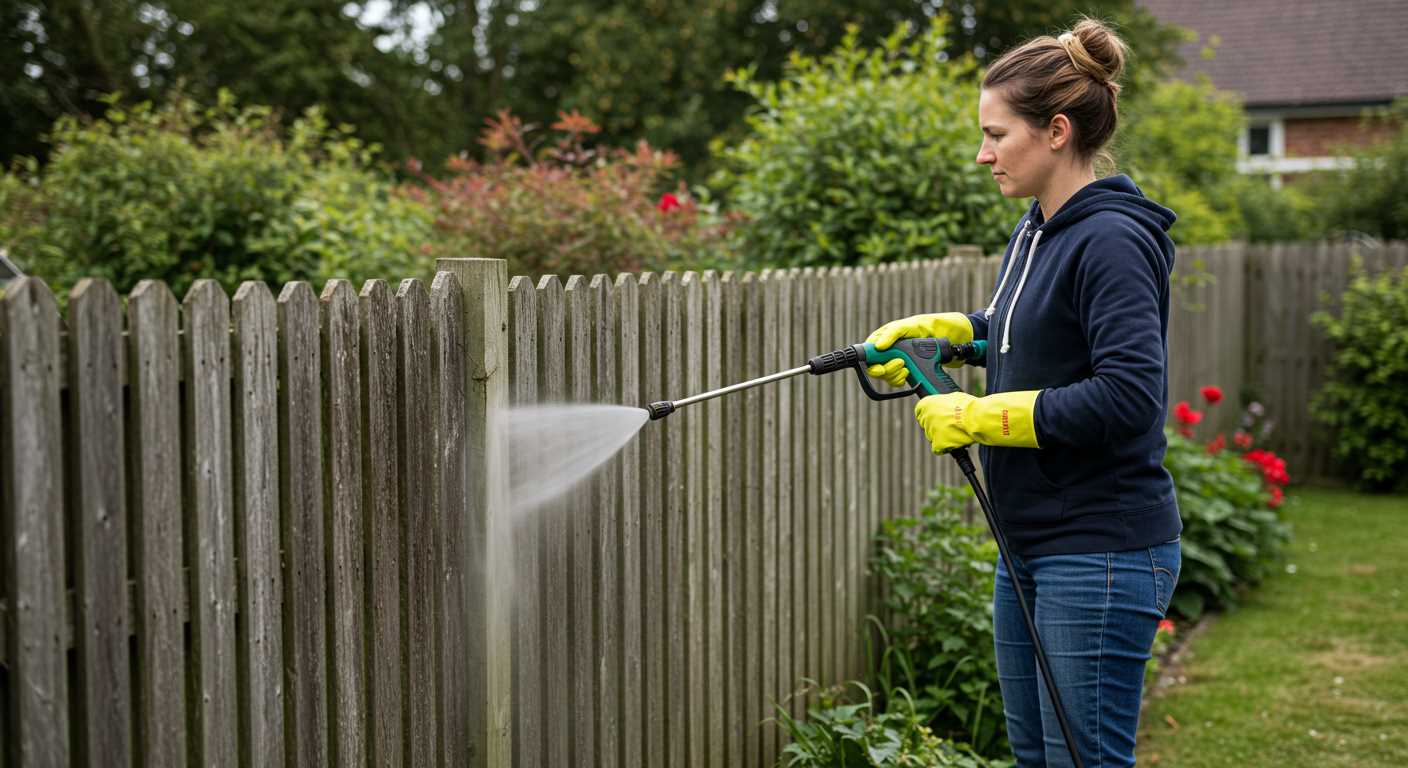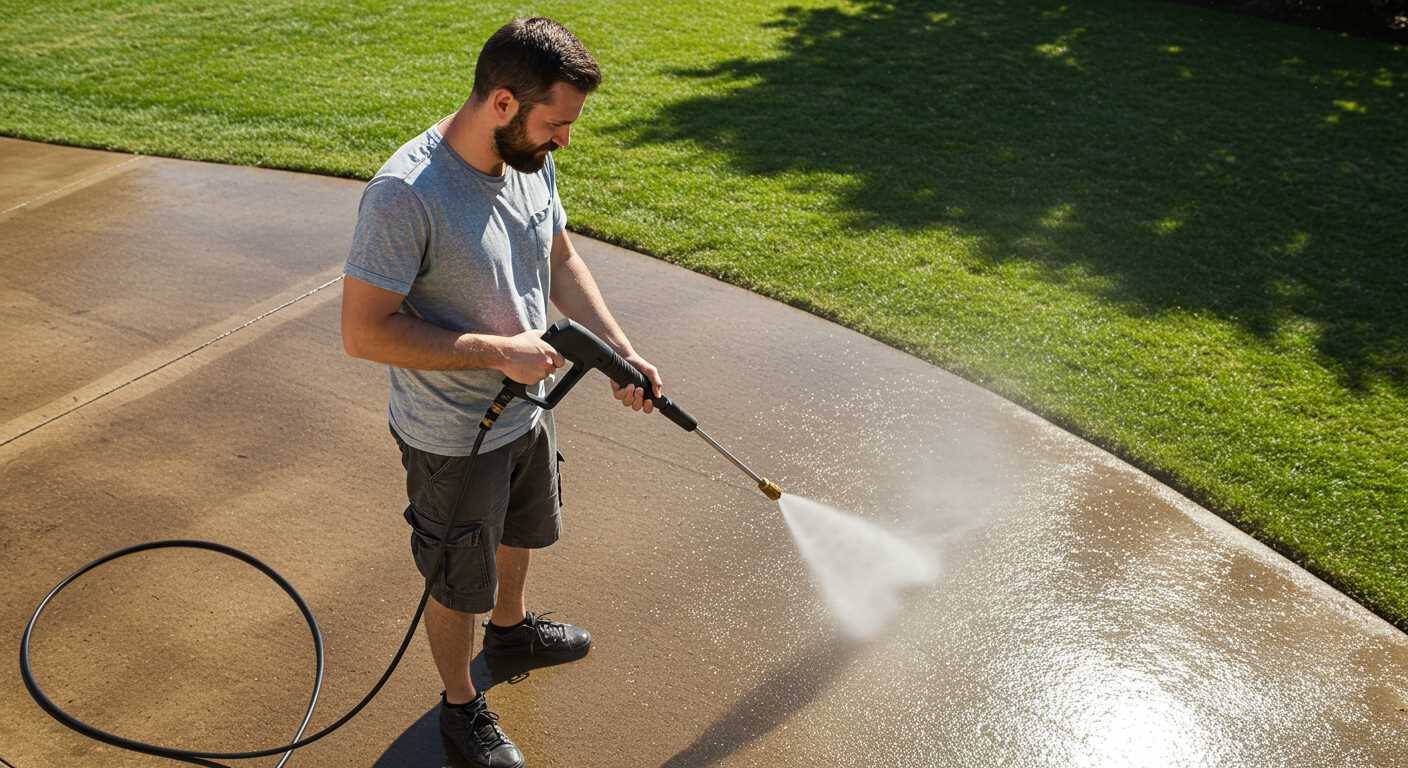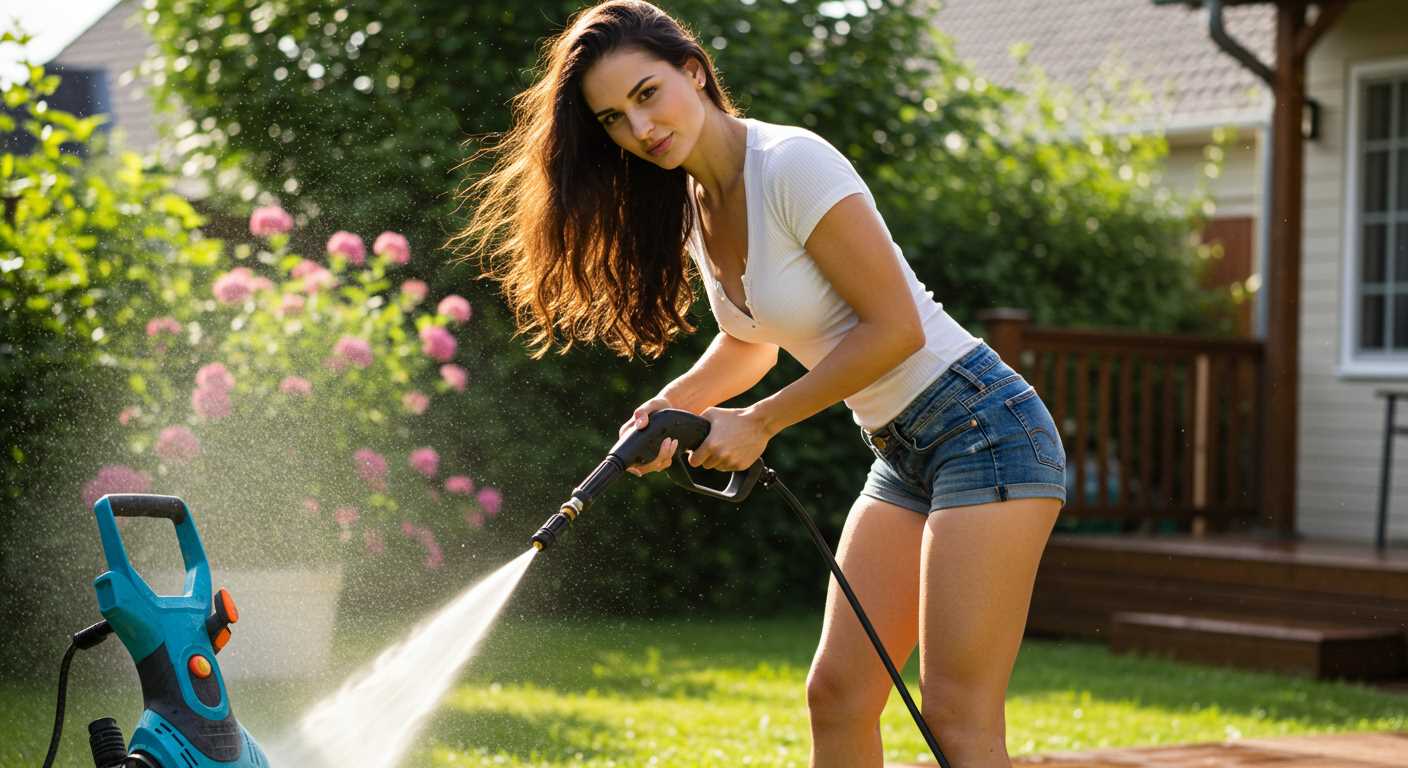



Yes, many models on the market feature settings that allow you to change the water pressure according to your cleaning needs. This function is particularly beneficial for tasks that range from gentle cleaning of delicate surfaces to intensive stripping of grime from driveways or decks.
When selecting a device, look for units with a nozzle system that offers multiple spray patterns. These nozzles typically enable adjustments from a wide fan spray for larger surfaces to a concentrated jet for tougher stains. Some advanced versions may include a dial mechanism or a digital interface for precise control over the water flow, enhancing versatility.
The ability to modify the pressure not only improves cleaning efficiency but also reduces the risk of damage to more fragile surfaces. Whether you’re tackling patio furniture or washing a car, having control over the pressure can significantly influence the quality of the job done.
Do Pressure Washers Have Adjustable PSI?
Certain models indeed feature mechanisms allowing the modification of water pressure settings. These systems can range from simple nozzle attachments to more complex integrated controls. Adjusting the output is essential for tailoring the operation to specific cleaning tasks.
For those looking to tackle various surfaces, understanding the range of pressures available is paramount. A lower setting, around 1000-1500 psi, works well for delicate materials like wood, while a higher setting, typically 2500-3000 psi, is ideal for tough jobs such as concrete or brick. Here’s a detailed breakdown of common setups:
| Surface Type | Recommended Pressure (psi) |
|---|---|
| Wood | 1000-1500 |
| Decking | 1500-2500 |
| Concrete/Brick | 2500-3000 |
| Vehicles | 1200-1900 |
Choosing the right pressure not only improves cleaning outcomes but also minimises damage risk. Thus, having the option to customise the output is advantageous for any user aiming for efficient results.
When considering what unit to purchase, I recommend looking for models that provide this capability, ensuring versatility for different cleaning challenges. Always consult the manufacturer’s guidelines to avoid misuse and maintain equipment longevity.
Understanding PSI and Its Importance in Pressure Washing
Determining the appropriate force of water is pivotal when cleaning various surfaces. Knowing the specific units of pressure helps ensure effective and safe cleaning results. A higher reading is ideal for tackling tough grime, while a lower setting protects delicate materials from damage.
Effects of Low and High Pressure
Low pressure is beneficial for sensitive areas such as wooden decks or painted surfaces, where excess force can cause harm. For instance, 1200 to 1900 units might be perfect for these jobs. Conversely, tough tasks, such as removing rust or heavy stains from concrete, require higher levels, typically ranging from 2500 to 3000 units. It’s crucial to match the output to the surface type to maximise efficiency.
Practical Tips for Pressure Selection

Always test on a small, inconspicuous area first. This will help gauge how the surface reacts to the chosen intensity. Additionally, standard attachments, such as nozzles, can significantly influence the impact of the water stream. Adjusting these can help fine-tune the cleaning process to align with the task at hand while safeguarding the integrity of various surfaces.
Types of Equipment with Variable Pressure Settings
In my extensive experience with cleaning equipment, I’ve encountered several types capable of modifying their output intensity. Understanding these variations can help you choose the right tool for your specific needs.
1. Electric Models
Electric varieties often feature a dial or nozzle that allows for pressure adjustment. They’re typically lightweight and suitable for residential tasks like cleaning vehicles or patios. Common brands include:
- Kärcher
- Sun Joe
- Greenworks
2. Gas-Powered Options
Gas-powered machines tend to deliver higher pressures and can also offer adjustable settings. They are robust, making them ideal for heavy-duty tasks such as stripping paint from siding or deep-cleaning concrete driveways. Noteworthy manufacturers include:
- Honda
- Generac
- Simpson
3. Commercial Grade Equipment
For commercial use, models equipped with advanced pressure regulation are common. These often include features like multiple nozzles and controls for precise adjustments. Top players in this arena are:
- NorthStar
- Mi-T-M
- BE Pressure
Choosing the right equipment involves assessing both the tasks at hand and the required pressure range. Whether you’re dealing with delicate surfaces or more robust materials, having the option to fine-tune the intensity can lead to better results and prolong the lifespan of the surfaces you’re cleaning.
How to Adjust the PSI on Your Pressure Washer
To modify the pressure output on your cleaning device, start by identifying whether your unit features a pressure control knob or a variable spray nozzle. If your model includes a control knob, turn it clockwise to increase and counter-clockwise to decrease the pressure effectively.
If you are using a variable nozzle, switch to the desired angle setting. Nozzles labelled with lower numbers typically produce higher pressure, while wider angles yield lighter output. For instance, a 0-degree nozzle provides a concentrated stream, while a 40-degree spreads the flow wider, reducing intensity.
Before making adjustments, it’s crucial to ensure the machine is operating properly. Disconnect any attachments and let it run for a few moments. Once you’ve adjusted the setting, test the output on a small area to confirm it suits your cleaning needs. Always wear appropriate safety gear, including goggles and gloves, during operation to protect yourself from any potential hazards.
Remember to consult your owner’s manual for specific instructions and safety warnings pertaining to your model. Proper maintenance and periodic checks can also affect the machine’s performance, so keep it in optimal condition for the best results.
Benefits of Using Adjustable PSI in Different Cleaning Tasks
Choosing the right level of force for specific tasks can significantly enhance cleaning efficiency and prevent damage. When tackling delicate surfaces like wood decks or vehicles, a lower setting allows for effective cleaning without risking scratches or dents. Conversely, higher levels are perfect for removing stubborn grime from driveways or brickwork.
Flexibility with intensity also allows for water conservation. Adjusting to a lower level can reduce the volume used during less demanding jobs, making the process more environmentally friendly. It’s especially beneficial in areas where water usage is restricted.
For the cleaning of heavy machinery or construction equipment, higher settings can be employed to easily blast away industrial muck and dirt. This adaptability not only speeds up the process but can also prolong the lifespan of tools and machinery by ensuring they are adequately maintained.
Utilising varied force levels promotes safety. Understanding which setting to use for each task helps avoid accidents, particularly in environments with fragile objects. Keeping the intensity lower around sensitive areas mitigates the risk of accidents while ensuring a thorough cleaning experience.
Additionally, a diverse range of force options contributes to cost-effectiveness. Users can tailor their approach to different surfaces and materials, which in turn maximises the utility of the equipment without necessitating multiple machines or excessive accessory purchases.
Limitations of Pressure Cleaners with Adjustable Settings

While having the ability to modify the intensity of your cleaner offers versatility, there are inherent drawbacks to this feature. First, the range of settings can sometimes lead to confusion, especially for novice users who may not fully grasp which setting is appropriate for various surfaces and tasks. This could result in ineffective cleaning or even damage to delicate materials.
Furthermore, machines with variable settings may compromise the overall durability. The complexity of additional components required for adjustment can introduce potential failure points, leading to increased repair needs over time. Simpler models without adjustable features often boast enhanced reliability, making them appealing for users prioritising longevity.
Performance Trade-offs
Power adjustments can affect the cleaning unit’s performance. When set to lower intensities, users may experience longer cleaning times, which can be inefficient for larger jobs. Additionally, some advanced machines may deliver subpar results at lower settings, failing to remove stubborn grime effectively.
In terms of usability, models with adjustable features tend to be bulkier, leading to complications in storing and handling. Portability might be an issue for those who require a lightweight solution for various cleaning tasks.
Limitations in Specialty Applications

Not all tasks lend themselves well to adjustable settings. For certain applications, like stripping paint or tackling heavy-duty mould, variable settings can prove insufficient. Experienced users often prefer a specific pressure level suitable for such demanding chores, bypassing adjustable options altogether to ensure optimal effectiveness.
The expense associated with machines offering these features is also a consideration. If the intended use does not justify the cost, investing in a more straightforward unit may yield better value in the long run.
Common Misconceptions About Adjustable PSI in Pressure Washers
Many users mistakenly associate flexibility in cleaning force exclusively with high-end models. This assumption often leads to frustration when lower-priced units come equipped with varying power adjustments. It’s not always true that only premium equipment offers this capability; mid-range options frequently include it as well.
An additional misconception is that adjustable settings imply a more complex or fragile system. In reality, most modern designs incorporate simple mechanisms, allowing for effortless modifications without sacrificing durability. Users can easily fine-tune their settings according to the task without worrying about damaging the unit.
Some believe that the variety of power options complicates usage or cleaning effectiveness. Contrary to this idea, being able to tailor force enhances performance across diverse tasks–from delicate surfaces to tougher grime–ensuring optimal results without unnecessary effort.
Another common error is assuming that increasing force is always better. Higher settings may not always yield superior cleaning results. In certain situations, a gentler approach protects surfaces from damage, ensuring longevity and integrity of materials.
Many also overlook the aspect of compatibility. Users sometimes think that all attachments and accessories are suitable regardless of the power configuration. However, specific nozzles and brushes may deliver better outcomes when paired with the appropriate settings, maximising efficiency.
In summary, understanding the nuances of power adjustability is crucial. It is advisable to explore the capabilities of various models and consider how power settings align with personal cleaning needs. This approach ensures informed decisions when selecting equipment for specific tasks.
Maintaining Your Pressure Washer for Optimal PSI Performance
Regular upkeep is essential for achieving the best operational pressure in your cleaning machine. Start with checking and replacing the inlet filter, as a clogged filter restricts water flow and can lead to decreased efficiency. Clean the filter monthly, ensuring no debris obstructs the flow.
Next, inspect hoses and connections for leaks or kinks. Any damage can disrupt the water supply and adversely affect the output pressure. Replace any worn or damaged components immediately to maintain consistent performance.
Additionally, regular adjustments to the nozzle and spray settings can enhance the cleaning experience. Using the correct nozzle size for your specific tasks permits optimal pressure output while protecting delicate surfaces.
Don’t forget to check the oil levels and battery status on electric models; keeping these at recommended levels can prevent mechanical failure. I advise changing the oil every 50 hours of operation or following the manufacturer’s guidelines.
Lastly, winterizing your machine during colder months can prevent freezing and damage. Use a pump protector and store the equipment in a temperature-controlled environment to prolong its lifespan.
By adhering to these maintenance guidelines, you will ensure your cleaning machine operates at peak pressure, ultimately enhancing your cleaning results.










